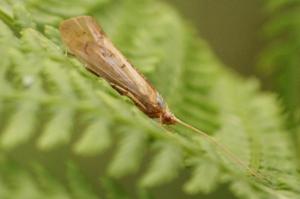Abstract

Artificial light is an important and necessary part of our urban environment, but has become a threat to biodiversity. As it can have substantial direct and indirect effects on populations of all kinds of organisms, we need to know how it affects different species. Light attraction in organisms such as bats and moths has been well studied, but other organisms have been largely neglected, such as Trichoptera. Trichoptera is one of the most abundant insects in freshwater systems and performs important ecosystem services. To increase the knowledge of this vital insect order, seasonal data from three different locations in Sweden was compiled and examined through meta- and regression analyses comparing catches in light traps and passive traps. The results indicated that artificial light would affect Trichoptera populations and this should be considered when erecting light sources near waterways. Unlike moths, female Trichoptera were more attracted to light than males. However, it did not seem that longer nights lead to larger light catches, as has been suggested in the past.
Responsible for this page:
Director of undergraduate studies Biology
Last updated:
05/03/17
